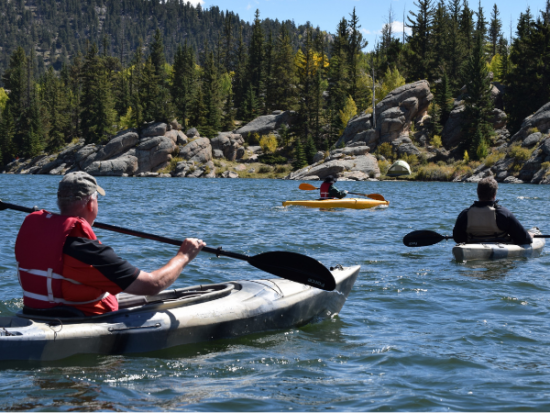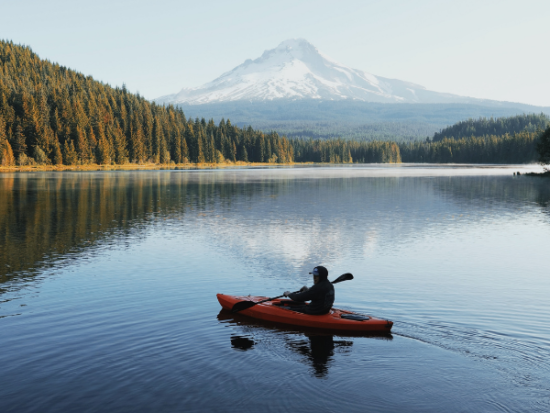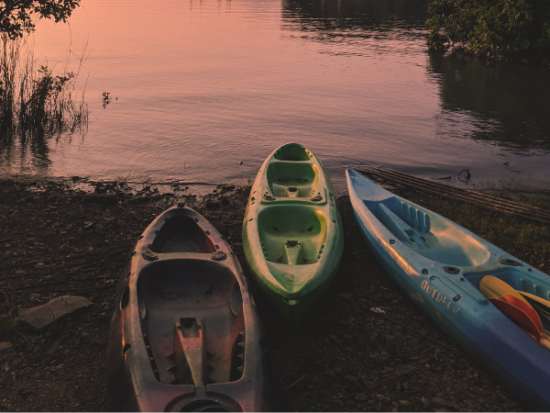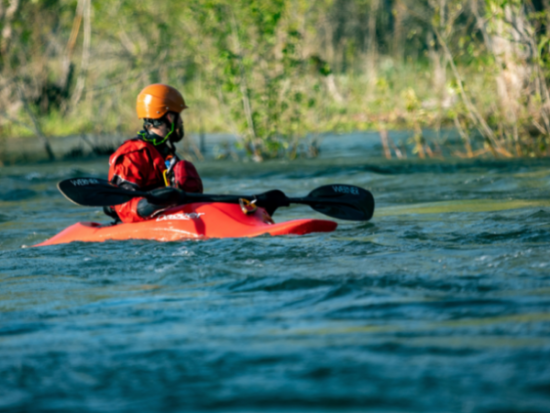Here is how to kayak for beginners
Interested in learning how to kayak? It’s a popular water sport. Millions of people all over the world have taken to kayaking as a sport, hobby, and de-stressing activity. It can be as relaxing or as thrilling as you want kayaking to be. If it is your first time learning how to kayak, don’t worry too much about being the best. Even the pros had to start as rookies.
While mastering kayaking may take you some time, you have to start somewhere. There are some tips and tricks that you can read up on before trying the sport. However, it is still best to consult with a professional trainer or guru for some hands-on experience. Nevertheless, read below for some advice on how to kayak for beginners.
Kayaking for beginners

One great thing about learning how to kayak is being one with nature as you get in some exercise and enjoy the water sport. If this is your first time trying out how to kayak, it might seem scary and intimidating to be out on the water alone. Beginner jitters are normal but don’t let that stop you from being prepared as best as you can be.
For starters, choosing the place where you will practice kayaking is a good start. Calm waters will help you get used to riding the kayak and then paddling it. Pick a small lake or pond where you can see the opposite shoreline.
Be sure to let someone know your exact location when you launch your kayak if you are going alone or with a small group. More importantly, check the weather beforehand for possible heavy rains or storms. Choose a day where it is sunny and the winds aren’t super strong.
Benefits of kayaking
There are many benefits to get out of learning how to kayak. Apart from it being a good new sport to learn, it is also a versatile sport. You can kayak in any body of water, provided you have the right kayak gear. From rivers to lakes to open bodies of water like the ocean, you can enjoy kayaking by yourself or with family and friends.
Learning how to kayak is also a good way to stay fit and healthy. You get a high-energy workout with a low impact on your muscles and joint when you paddle with both hands. Kayaking can help you get in your cardio, core, arm, back, shoulder, and chest workout all at the same time.
Just try not to overdo it your first time. Try practicing for an hour and slowly increase your time as you learn better techniques and feel more secure in the open water.
Learning how to get into a kayak
By looking at people who know how to kayak, you would think it’s easy to learn the sport. While it looks easy, it takes a lot of training and practice to learn the best kayaking techniques fully. For beginners, you might need to take note of a few things before heading out into the open water, especially by yourself.
Pushing your kayak from the shoreline
Getting inside your kayak from the shore is much easier than pushing yourself up from the water and into the boat. Whether it’s on the shores of a beach, lakeside, or riverfront, you will want the kayak to be as close to the shoreline as possible. But not too close, or you will have difficulty pushing it back into the water once you’re inside.
If the kayak is in shallow waters, be careful not to push it too close to big rocks. While rocks may give you a boost when climbing up into your vessel, they might damage your kayak, not to mention if you accidentally plunge your paddle blade into the water and it hits bottom.
Getting yourself inside the kayak
Docks are convenient for boarding a kayak. Place your vessel parallel to the dock, close enough to reach but not too close to scratch the hull or the side of the kayak. Place the paddle within grabbing distance on the side of the cockpit. Sit on the dock and get as close as you can to the kayak. Lower your feet first into the cockpit and then your entire body. Keep your balance.
Once you’re inside, put on your life vest first and secure the spray skirt if there is one. Then use your hands in sweep strokes to push the kayak into the open water. Once you start floating on the surface, you can use your paddle shaft to move the kayak further into the water gently.
What are kayak paddling techniques?
Now that you have an idea of getting into your kayak, it’s time to learn about paddling techniques. One of the most important things to remember about kayak paddles is knowing how to choose them. The length and size will vary, and your choice should depend on your height and the width of your kayak.
As a beginner, remember that learning proper techniques will not only improve your skills but keep you safe as well. Knowing how to kayak properly means knowing how to do it safely and with the least possibility of accidents or injury.
Holding a kayak paddle
There are two parts of a kayak paddle: the shaft and the blade. The shaft is the long pole that you grip to move the paddle. The blade is the flat part on both ends that goes into the water. One side of the blade is concave, and this should always be facing you. Place your hands slightly farther apart than your shoulder width in the paddle.
Gripping it closer to the center will give you more leverage. Remember that holding the paddle correctly is just as important as knowing how to use it. Beginners might want to try out kayaking with their bare hands, but some prefer wearing rowing gloves to give them a better grip.
Using a paddle in the water
Before catching your paddling rhythm, make sure everything is set first. Your life jacket, your seating position, the safety of your kayak. Now it’s time to grab your kayak paddle. Slice the paddle blade vertically into the water with your hands securely gripping the shaft; knuckles pointed upward. Slice the paddle blade vertically into the water, keeping a relaxed grip on the shaft with your knuckles pointed upward.
Keeping this form will put more power into your paddle without exerting more energy. Instead of using just your arm for paddling, use your entire core. This way, you won’t tire out so fast. Hold the paddle tightly with one hand as the other rotates it. Do what feels most natural to you so you can easily find your rhythm.
What are the types of kayaks?
Just like in any other sport, knowing your equipment is half the battle. Kayaking only requires two gears apart from the safety ones: the kayak itself and the paddle. It’s safe to assume that you already know what a kayak looks like—often shaped like a banana, this type of water vehicle is simple in structure.
The cockpit is where you sit, a hole in the middle big enough to fit one person. There is a bow and a stern, just like in a boat but much more simplified. Kayak size and design may vary, but they serve the same purpose of getting you out into the open water and ready to paddle. In any case, here are some popular types of kayaks:
- Sit-on-top kayaks: Generally recommended for beginners because of its wide seat that isn’t enclosed. It is easier to enter and exit and also wider to provide more stability.
- Touring kayaks: Long with small cockpits for a more involved kayaking experience.
- Inflatable kayaks: Recommended for the adventurer who loves to go kayaking on the go. This kayak will need to be inflated before being used, but it’s more portable than other types.
- Recreational kayaks: Shorter in length for a more ideal, calmer kayaking experience. Generally recommended for tourists who wish to try the sport but only as an enjoyable leisure activity.
- Whitewater kayaks: Used by kayaking pros in whitewater or rough waters. Different types of whitewater kayaks can give you different advantages depending on how you plan to use them.
Related Articles
Summary
Kayaking is an enjoyable activity that has been considered a sport for decades now. While many find leisure in this water activity, some pros compete for sporting events in kayaking. Whether you intend to use your newfound knowledge of kayak as a hobby or take it up a notch and pursue it as a sport, you have to start somewhere.
As much as it is a relaxing activity, kayaking can also be dangerous. Like any other water sport, it is always better if you know how to swim before delving into one. It is also necessary to take precautions such as wearing your life vest and securing an emergency pack inside your vehicle.





